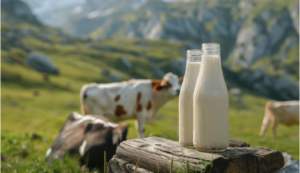Python: Gateway to Web Development and Data Science
In the steadily advancing scene of programming languages, Python has arisen as a flexible, strong, and user-friendly choice that has caught the hearts of developers, data scientists, and tech enthusiasts alike. Its popularity has flooded lately and for good reasons. Py offers a special mix of simplicity, productivity, and a wide range of applications, making it a champion language in the realm of software development.
A Brief History of Python
Python was created in the last part of the 1980s by Guido van Rossum, a Dutch software engineer, and it was released in 1991. The language was imagined as a replacement for the ABC language, with an emphasis on code readability and simplicity. Guido van Rossum’s vision was to make a programming language that was strong as well as a delight to utilize. The name “Python” was inspired by the British comedy group Monty Python, featuring its quirky and fun nature.
Throughout the years, Py has gone through various updates and modifications, with the most prominent being Python 2 and Python 3. The arrival of Py 3 denoted a critical shift, acquiring changes that aimed to improve the language’s consistency and resolve certain design flaws in Py 2. This change, while at first met with some resistance, has now generally been embraced by the Python community.
Python’s Elegance and Simplicity
One of Python’s most prominent features is its exquisite and direct language structure. Py code is known for its clarity, with a solid emphasis on utilizing whitespace to define code blocks, eliminating the requirement for curly braces or other delimiters. The result is a perfect and natural language that is simple for both beginners and experienced software engineers to comprehend.
This readability not only makes Py a phenomenal language for figuring out how to program but also enhances collaboration and code support in proficient conditions. It diminishes the probability of syntax mistakes and promotes good coding practices.
Versatility and Broad Applications
Python’s adaptability is maybe its most convincing feature. The language’s wide range of applications has contributed essentially to its popularity. Here are a few key spaces where Python succeeds:
1. Web Development
Python is as often possible utilized for web development, thanks to frameworks like Django and Flask. Django, a significant level Python web structure, works on web improvement undertakings by giving instant answers for normal difficulties. Flask, then again, is a miniature structure that permits designers to build web applications rapidly and with extraordinary adaptability.
2. Data Analysis and Visualization
Python has turned into a staple in the field of data science and analytics. Libraries like NumPy, pandas, and Matplotlib give the tools expected to analyze, manipulate, and visualize data. Moreover, Jupyter notebooks offer an interactive and collaborative environment for data exploration and experimentation.
3. Machine Learning and Artificial Intelligence
Python’s machine learning libraries, including scikit-learn, TensorFlow, and PyTorch, have slung it into the world of artificial intelligence. Developers and analysts use Python to make sophisticated machine-learning models. Empowering advancements in natural language processing, computer vision, and more.
4. Automation and Scripting
Python is a go-to language for automating repetitive tasks and scripting. Its convenience and cross-platform compatibility make it an ideal decision for composing scripts that work on different everyday activities, from file management to system administration.
5. Scientific Computing
In the domain of scientific computing, Python’s libraries, like SciPy and SymPy, offer help for mathematical and scientific tasks. Specialists and researchers use Py to perform complex simulations, tackle numerical issues, and analyze experimental data.
6. Game Development
While not quite as broadly recognized as a few different languages in the gaming industry, Python is making strides in game development. Libraries like Pygame offer a platform for developing 2D games, making game development accessible to a more extensive audience.
7. Internet of Things (IoT)
Python’s simplicity and flexibility make it an extraordinary choice for IoT projects. Raspberry Pi, a famous single-board PC, accompanies Python pre-installed, making it a number one for hobbyists and professionals dealing with IoT applications.
Python’s versatility across these different fields exhibits its strength as a multipurpose language. Its ever-expanding ecosystem of libraries and structures, alongside its dynamic and inviting community, guarantees that Py stays at the bleeding edge of technology.
Community and Collaboration
Python’s success isn’t exclusively because of its features; it likewise owes a lot of its fame to its devoted and comprehensive community. The Py community is known for its friendliness and ability to help newcomers. This inviting atmosphere extends to both online discussions and in-person events like PyCon. Where developers, educators, and devotees accumulate to exchange information and ideas.
Open source improvement plays a critical part in Python’s development. Endless open-source tasks and libraries have been made in Py, adding to the language’s development and versatility. This cooperative environment empowers developers to expand upon one another’s work and create solutions that benefit the whole community.
Python for Beginners
Python’s accessibility is a significant draw for beginners and those new to programming. The language’s spotless and readable syntax lessens the obstruction to entry, making it easier to embrace major programming concepts. Accordingly, Py is often recommended as the primary programming language for individuals figuring out how to code.
Online assets, tutorials, and interactive coding platforms like Codecademy, Coursera, and edX offer beginner-friendly Python courses, permitting aspiring developers to begin rapidly. The wide accessibility of instructive material, alongside a supportive community, encourages a positive learning environment for newcomers.
Python 3: A Commitment to the Future
The transition from Python 2 to Python 3 denoted a huge crossroads in Python’s history. Python 3 brought significant upgrades and corrected design flaws present in Python 2. While the movement at first presented difficulties for designers, the Py community’s commitment to Python 3 has been instrumental in its successful adoption.
With the official end of Python 2’s support, the community and developers the same have embraced Python 3, prompting a more unified and forward-looking ecosystem. Python 3 keeps on advancing, presenting new features and enhancements while keeping up with compatibility with prior .versions
Conclusion
Python’s journey from its beginning in the last part of the 1980s to its ongoing status as a main programming language is a testament to its versatility, simplicity, and vibrant community. Its flexibility across a wide range of domains, from web development and data science to AI and logical processing, has laid out it as a go-to language for developers around the world.
The future of Python looks encouraging, with continuous progressions and a strong commitment to keeping up with its user-friendly and flexible nature. Whether you’re a seasoned developer or someone taking their first steps into the world of programming. Python’s elegant and direct language syntax, alongside its endless applications, makes it an important resource in the consistently developing tech landscape.






Post Comment
You must be logged in to post a comment.